MEMORABILIA ROOM
Florida Keys Bottles Shelf
Page 2
Making Bottles
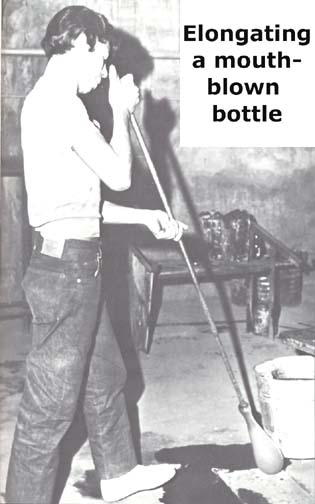
Swinging the blowpipe to elongate a free-blown
bottle.
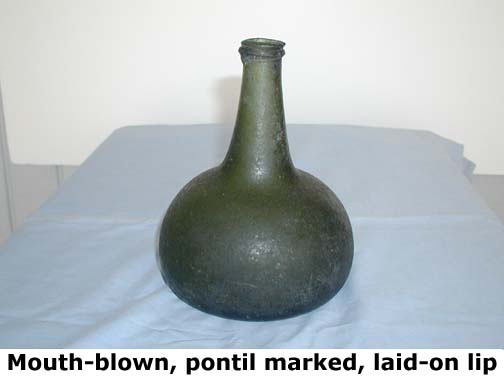
This classical European wine bottle was entirely free-made.

The blowpipe is not the pontil. The pontil is attached after blowing
and to hold the bottle for final finishing such as lips, handles, etc.
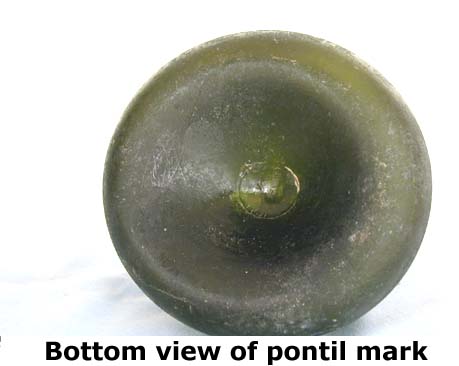
Pontil scars are usually seen on all bottles before 1840. The demand
for bottles intensified after 1840 and improved pontil attachments were
used to speed up production and reduce breakage.
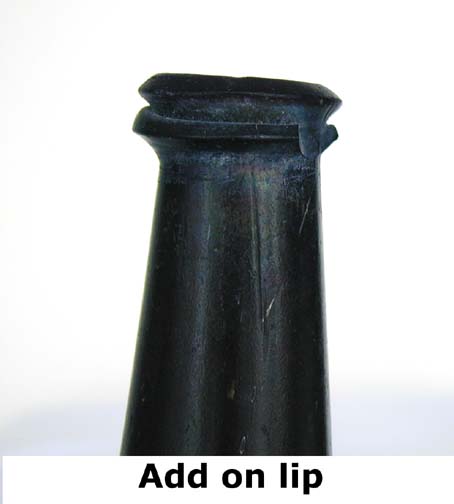
Many methods were used to seal the bottle. Until the 1870s most
bottles were sealed with corks which did not require a near-perfect round
mouth.
MOLDS
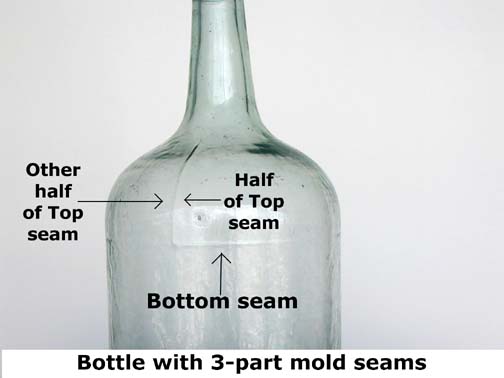
Increased demand, uniformity and artistic desires brought about
faster production methods. The first molds were wooden.
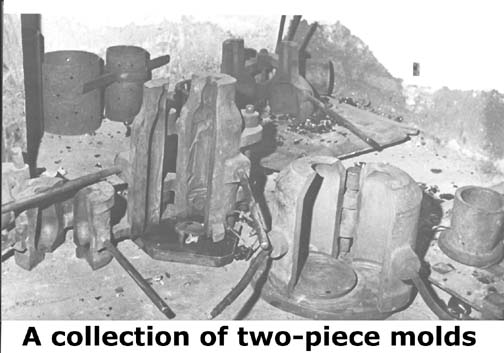
The blowpipe is held in the mouth of the mold to expand the heated
glass to the inside shape of the mold. "Slug plates" can be fitted
inside the molds for embossing. Embossing became popular after the
Civil War.
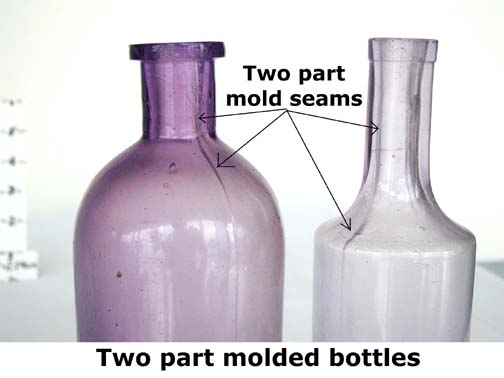
Before about 1860 the two-piece mold was used primarily for the
top mold for the three-piece mold. By 1900 the entire bottle was made in
a two-piece mold.
Lets look at some other bottles.
Continued on Page 3
Go to Page 3
Return to Cultural Museum